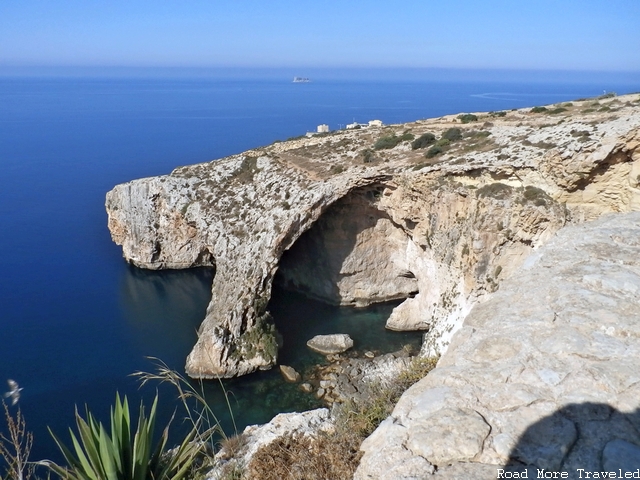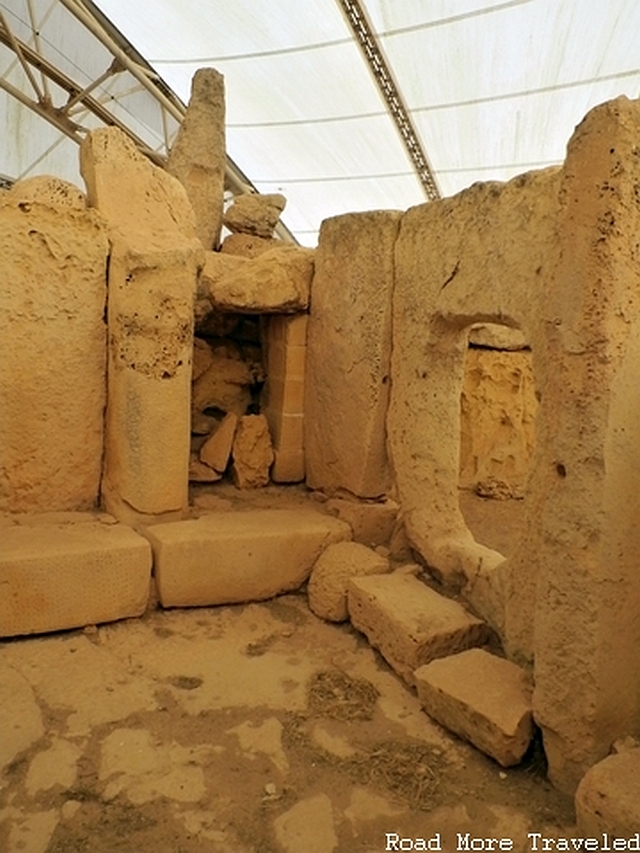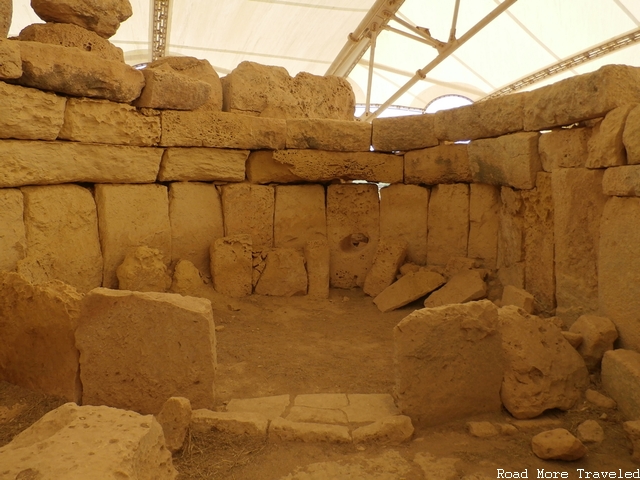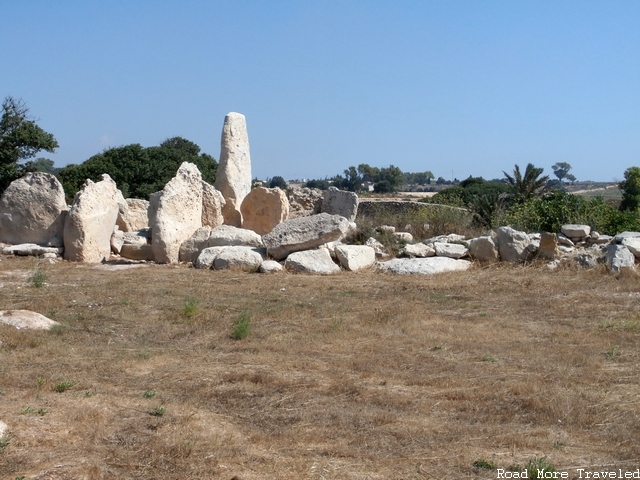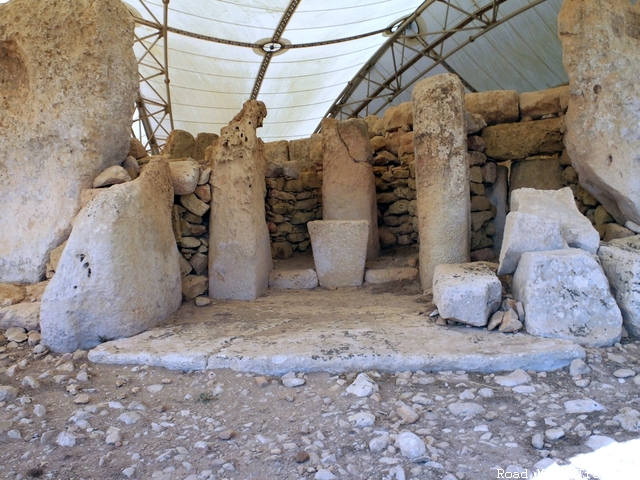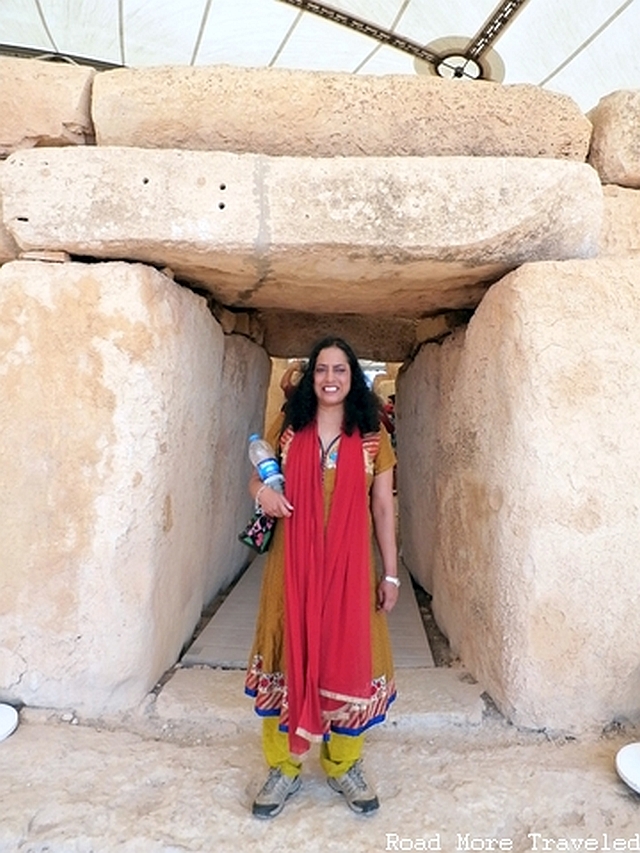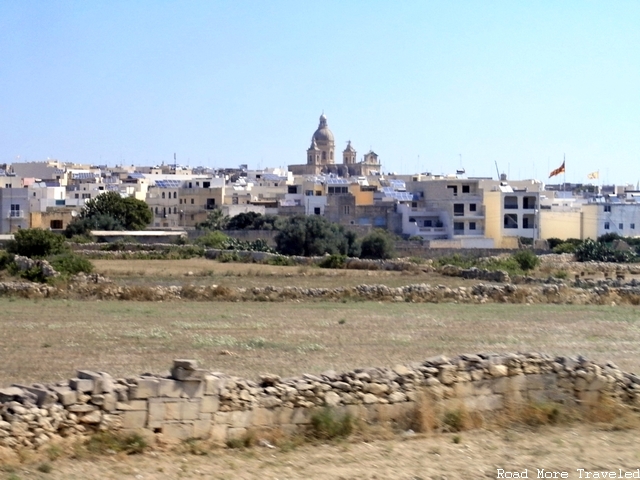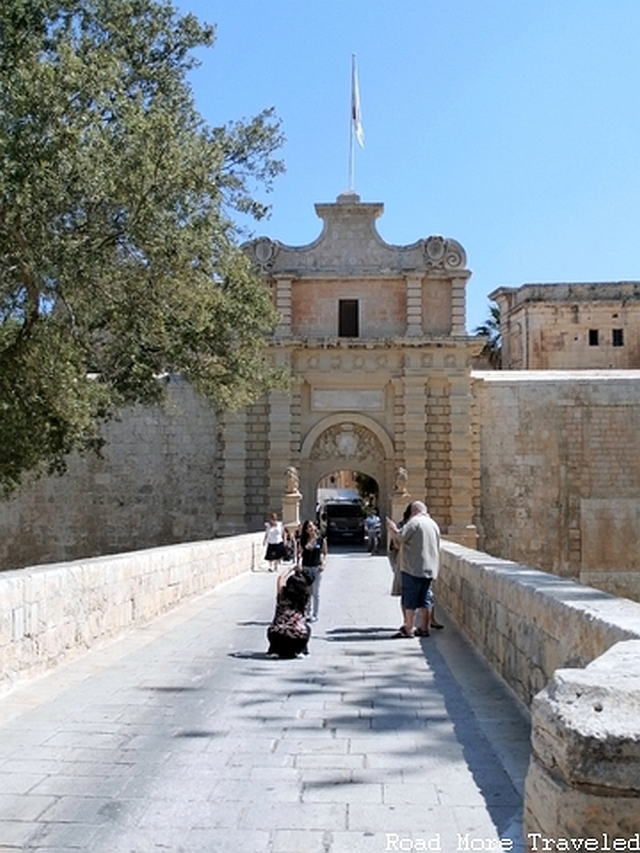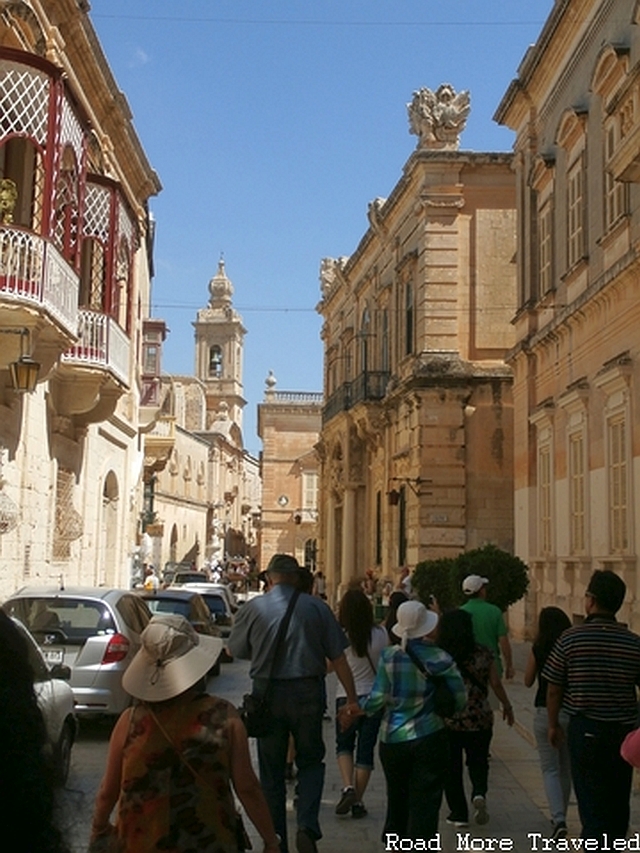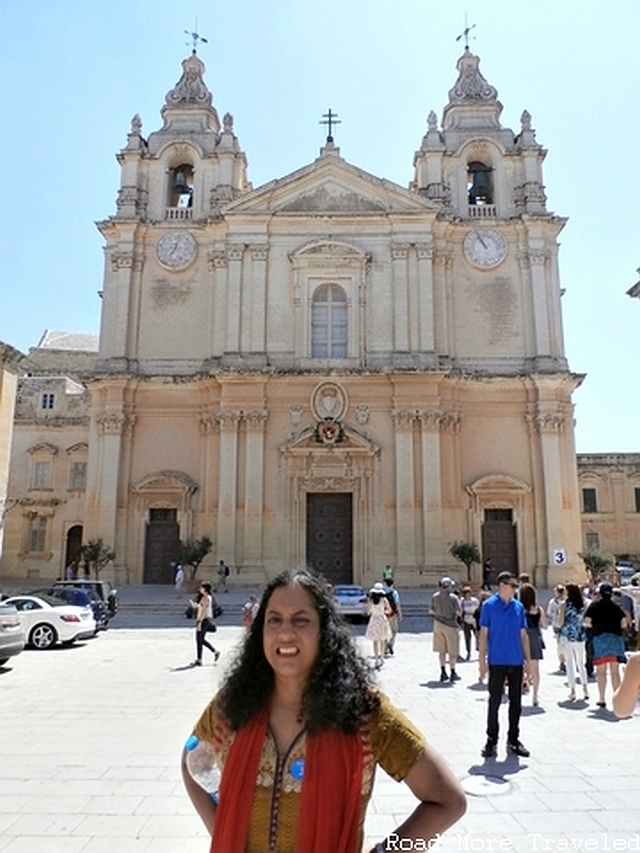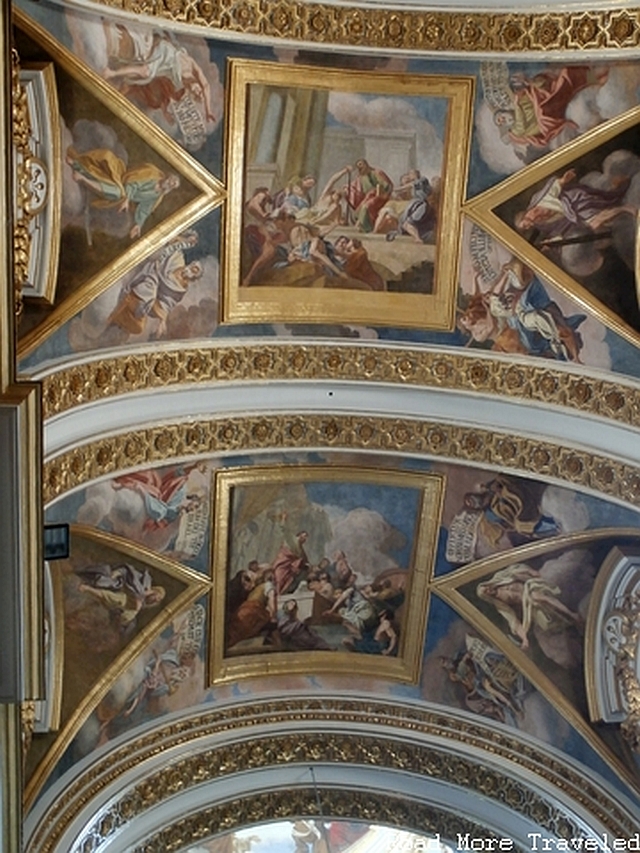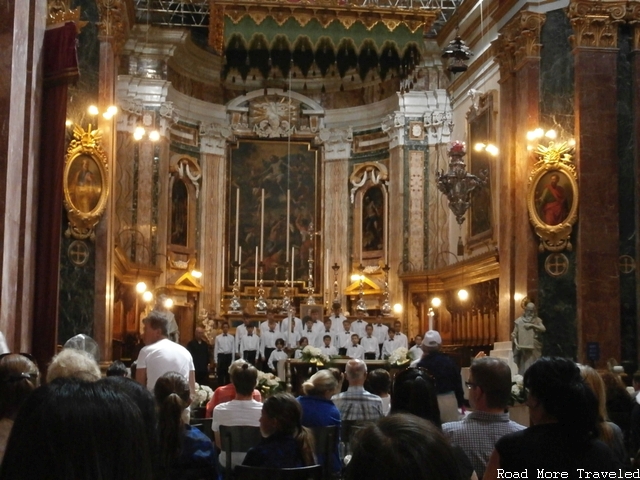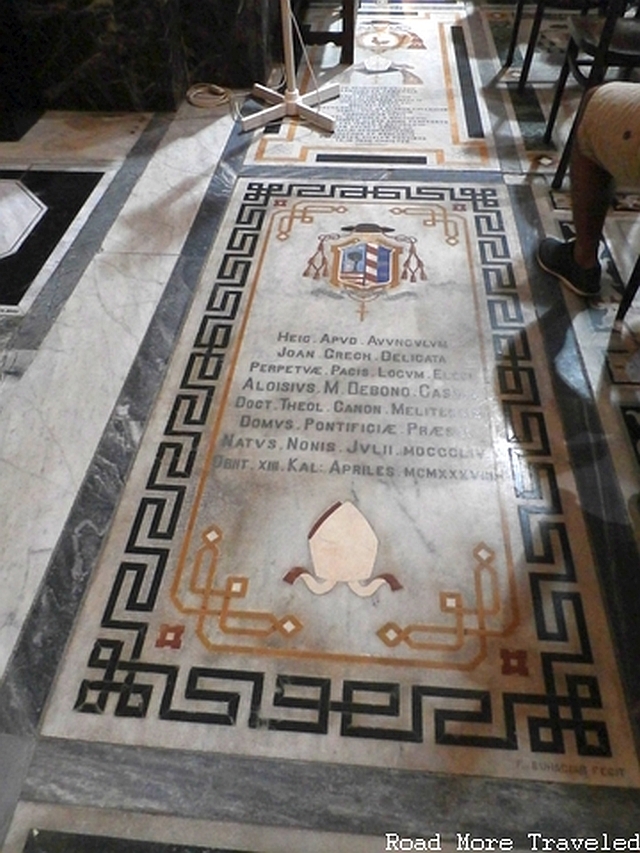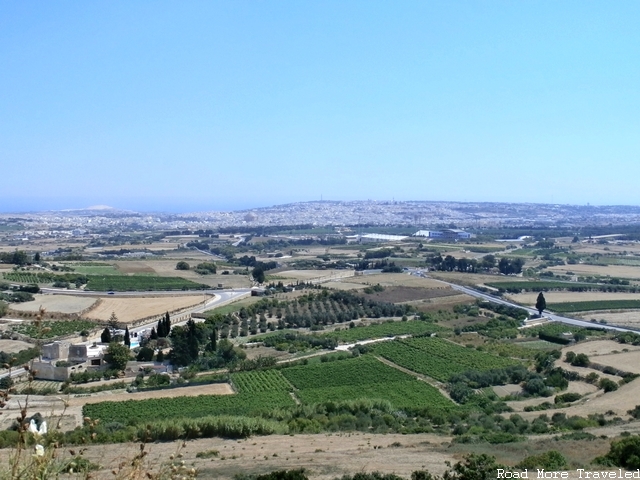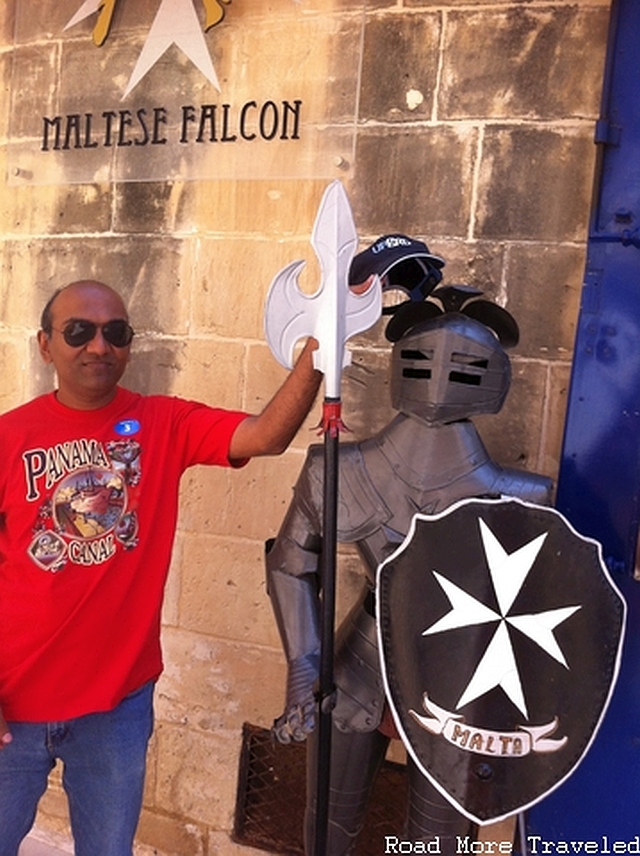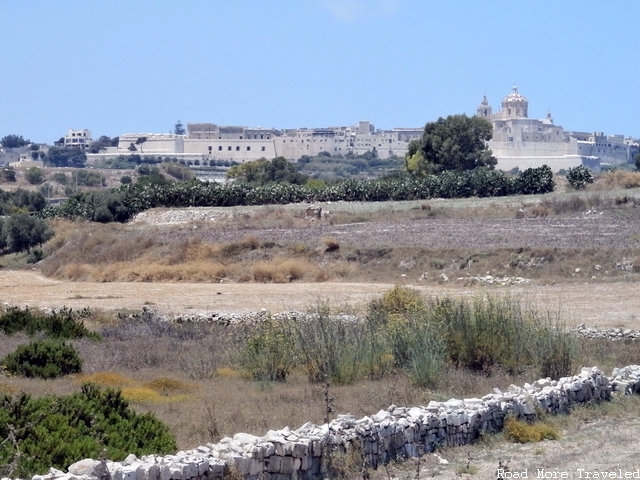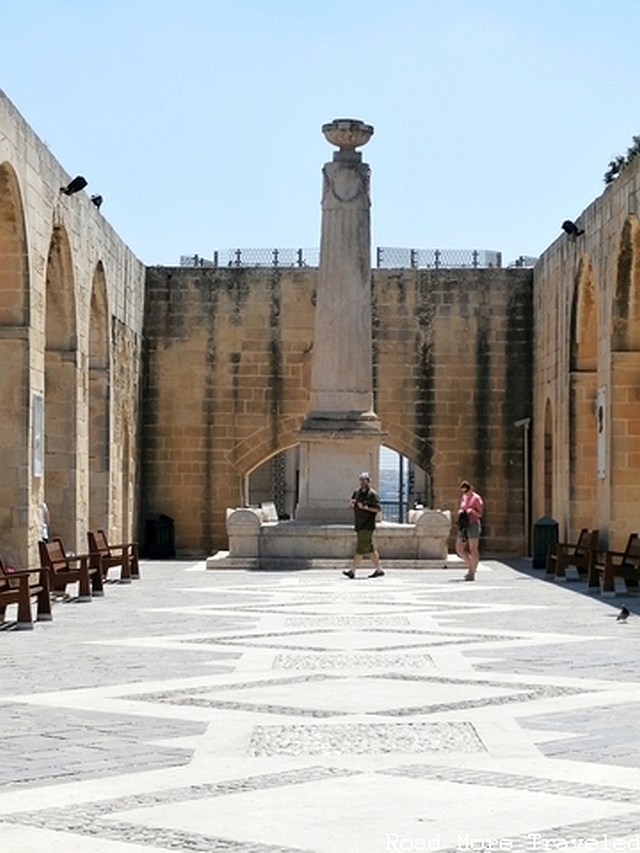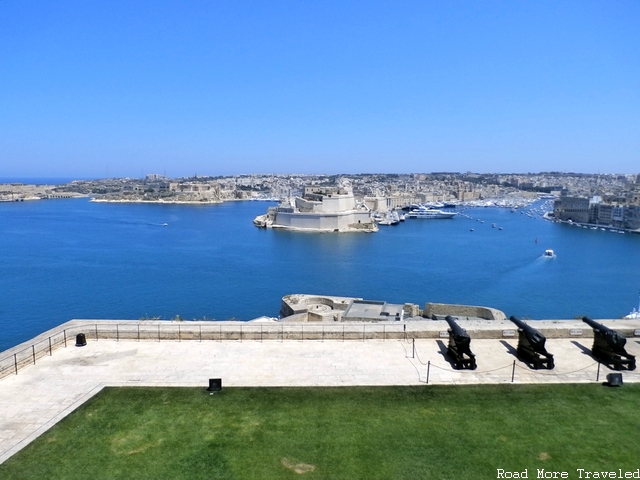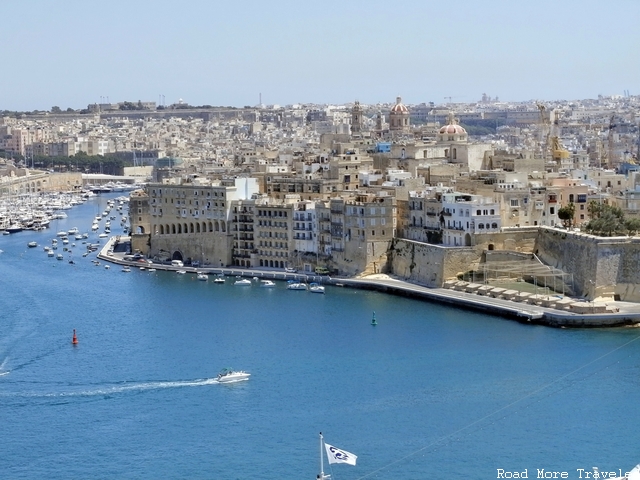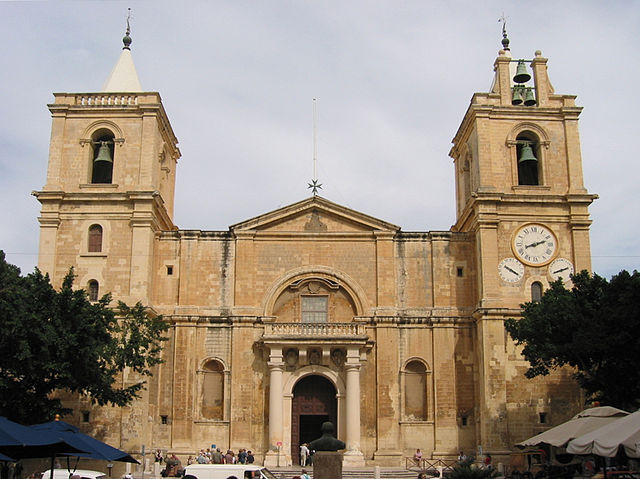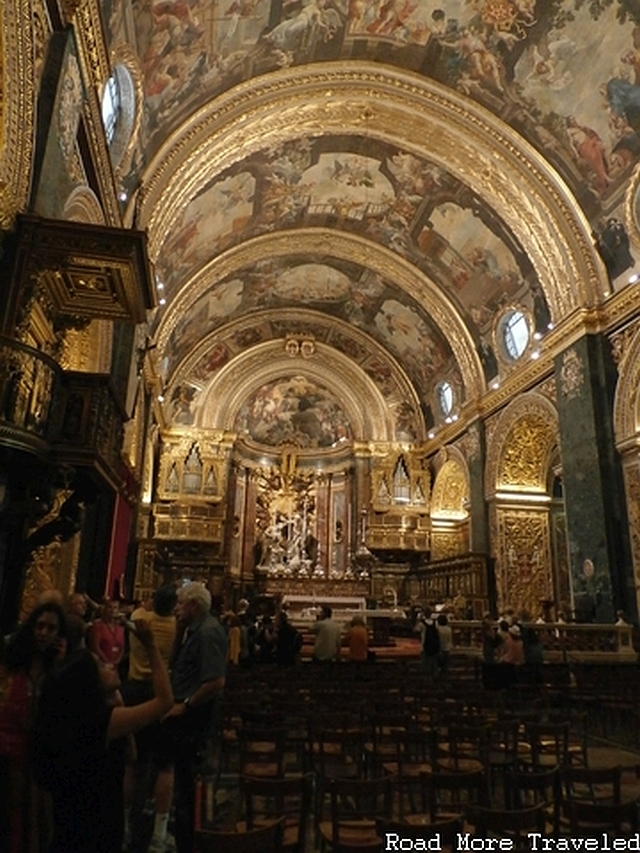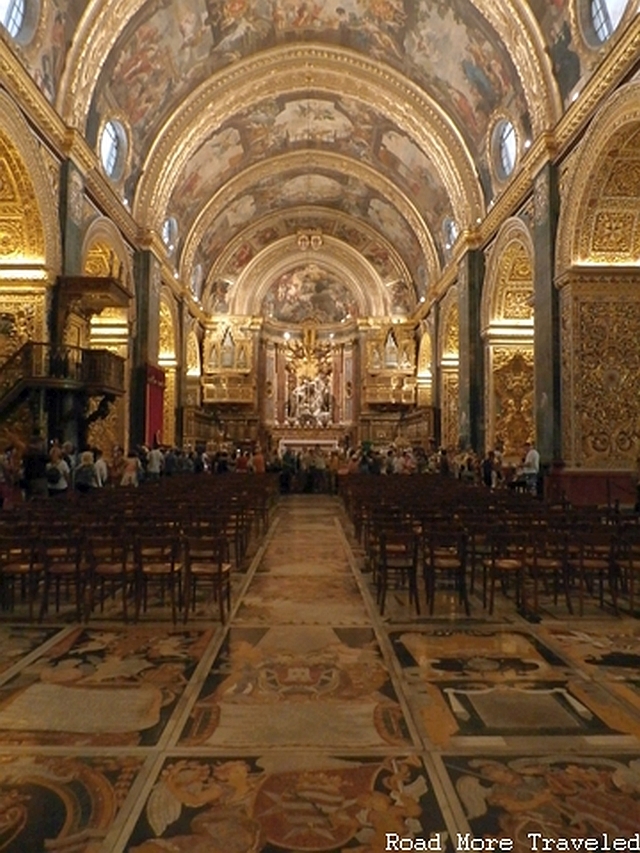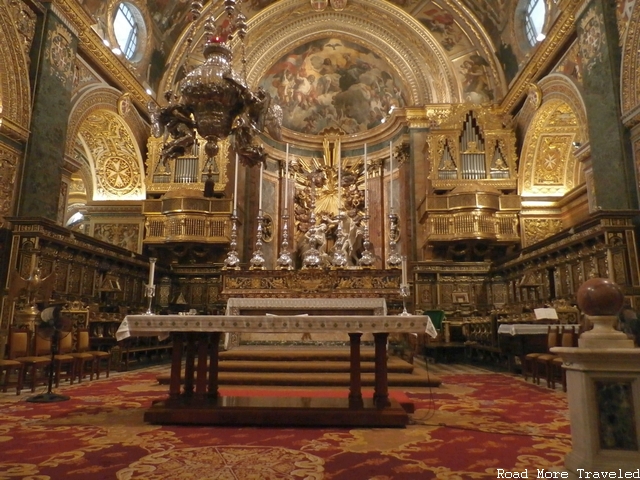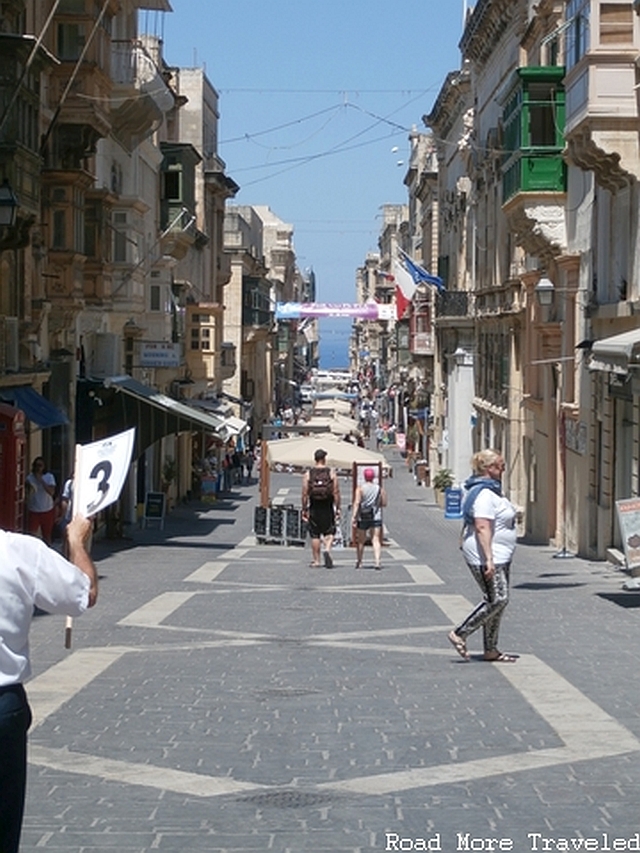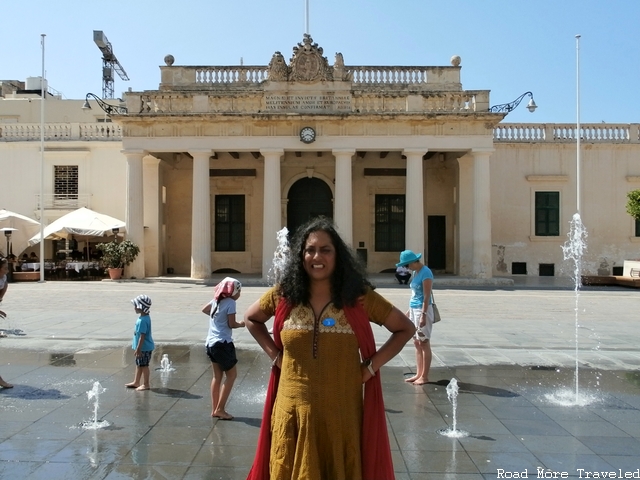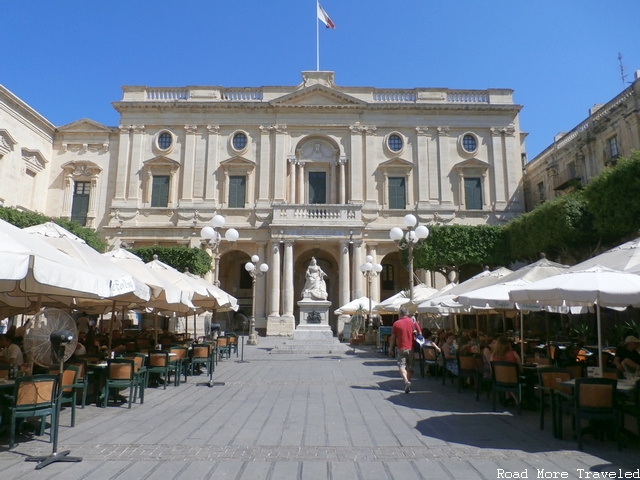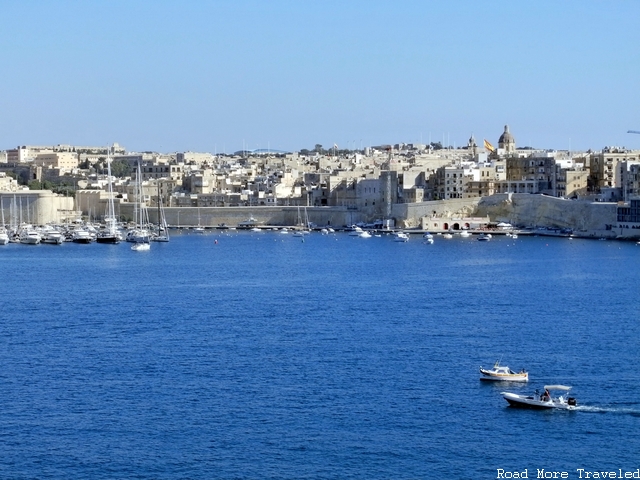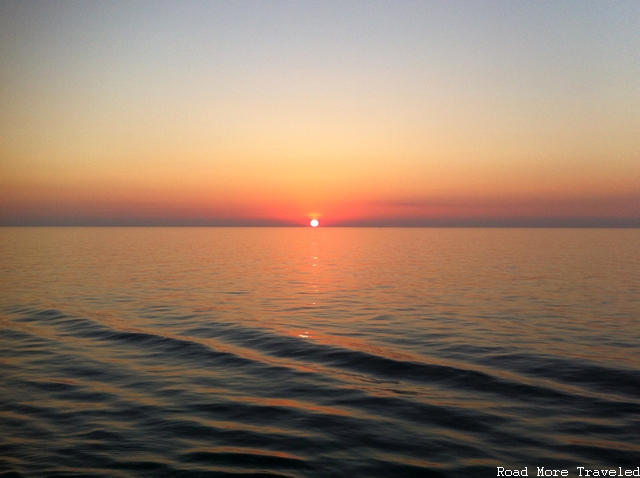After our enjoyable visit to the island of Mykonos, Greece, we re-boarded the Emerald Princess to sail across the Aegean and southern Mediterranean to our ship’s second port of call, the island nation of Malta. With both Italy and Greece on its doorstep, Malta doesn’t top the list of destinations for American tourists. Nevertheless, tourism is an important industry for the small nation. Roughly 1.6 million people a year visit annually, more than three times the nation’s permanent population. Cruise ships now add significantly to that tally annually.
If you’re a movie buff, chances are you’ve caught glimpses of the island on the big screen without realizing it. Movies such as Gladiator and Troy used the island nation as a setting. Much like Greece, Malta is also awash in history, with ancient civilizations dating back more than 5,000 years. During our visit, we literally hopped around from one end of the island to the other. We started off at the ancient Ħaġar Qim temples, followed by a visit to the medieval city of Mdina. Finally, we spent a couple of hours exploring the bustling capital city of Valletta.
Date of Visit: Wednesday, July 1, 2015
If you’re planning to visit Malta, keep in mind that it’s a small country. REALLY small. The distance by road from the far eastern end of the main island of Malta to the far western end is all of 25 miles. Our circular trip from Valletta to Ħaġar Qim to Mdina and back to Valletta clocked in at 22 miles. Even though the road system is made up of slow speed, mainly 2-lane roads, it just doesn’t take very long to get from place to place. This makes it easier to see plenty of sights, even if you only have a day or two to spare. The islands of Malta and Gozo have an extensive bus system that can take you to most important landmarks. The cost is EUR 1.50-EUR 3.00 each way (EUR .75-EUR 2.50 if paid with a reloadable card).
Taxi fares usually max out around EUR 25, but it’s best to agree on a fare before departing. Note that although most associate “Malta” with the main island, the country actually consists of three islands – Malta, and the two smaller islands of Gozo and Comino to the east. Ferry service is available from Malta to both islands.
The Ħaġar Qim Temple Ruins
Originally, our tour was supposed to take us to the Tarxien Temples, but they were closed due to a construction project, necessitating a substitution with the Ħaġar Qim Temples instead. The temples are approximately 10 miles from the cruise ship port in Valletta, and along the way, our guide gave us a bonus stop at one of Malta’s natural wonders, the Blue Grotto.
Best viewed in the morning light, the waters around the natural arch reflect a brilliant phosphorescence of the submerged flora. While breathtaking on its own, most visitors come for the sea caves hidden behind the arch, reachable only by boat. Boat tours will take you to the mouth of the caves; if you’re a scuba diver, you can explore inside the caves.
Just a couple of miles down the road in the village of Qrendi, we reached the Ħaġar Qim Temples (pronounced hadjar eem). While archaeologists believe the temple dates to 3600-3200 B.C., nobody knows exactly what led to their construction. Malta’s original inhabitants left no clues as to its purpose. Some archaelogists believe it may have been a site for religious rituals similar to Stonehenge. Much like Stonehenge, the temples were built in a circular shape. Similarly, on the summer solstice, the morning’s first light enters a hole on an apse in an inner passage and illuminates one of the low slabs.
The museum at the temple site also contains some curious artificats, including doll-like objects with removable heads. The heads were apparently interchangeable, depending on the specific type of ritual being performed. The circular temples are much smaller than those at Stonehenge. In addition, the type of limestone used makes the stones quite fragile. That led to the addition of the protective roof you see today.
An inner room of the temple
Circular altar room
Megaliths arranged outside the temple
Another altar room, this time with a keystone in the center
Prita standing in the front doorway of the temple – notice the resemblance to the stones at Stonehenge
The Medieval City of Mdina
After our visit to the temples, we headed a short distance northwest, but fast forwarded about 5,000 years in time, to the medieval town of Mdina. Mdina is perhaps best known for its blown glass figurines, similar to the Murano glass found in Italy. For history and architecture seekers, Mdina also features a “walled city”. Here, you’ll find a scene that hasn’t changed much since the 17th century. Along the way, our bus crawled along some rather bumpy roads in the Maltese countryside, passing several villages. Finally, our route provided a view of the Grotto and Parish Church of St. Paul in Rabat just before reaching Mdina. Also notice the interesting way in which property owners mark boundaries – not with a fence, but a low rock wall.
Once in Mdina, all motorized vehicles, except for residents and local deliveries, must stop on the edge of town. The streets in the medieval quarter are simply too narrow to handle modern vehicles; they were designed for horse-drawn carriages, after all. At the entrance to the old city is the Mdina Gate; in medieval times, all visitors would have had to pass through this gate to enter the city.
Once through the gate, a sea of Baroque limestone buildings greets you along the narrow main street. You really do feel like you’ve stepped back in time to the days of castles and kings as you walk down the cobblestone streets.
A short walk brought us to our primary reason for visiting Mdina, a visit to St. Paul’s Cathedral, the first Catholic cathedral of Malta.
Though the original church dates to centuries earlier, authorities built the current Baroque-style building between 1697 and 1703. The bishop commissioned it when an earthquake destroyed the original in 1693. The site markes where governor Publius met Saint Paul following his shipwreck off the Maltese coast, according to legend. Indeed, many of the frescoes in the apse illustrate Paul’s shipwreck. Many artifacts from previous incarnations of the cathedral, including a painting depicting the conversion of Saint Paul and a 15th-century Tuscan painting of the Madonna and Child, and the main door leading to the sacristy dating to 1530, survived the earthquake and became part of the reconstructed cathedral.
The cathedral is also known for the exceptional inlaid marble flooring, actually tombstones for bishops and other dignitaries, in the main hall. Maltese artist Francesco Zahra originally designed these, but others added to them over the years. Interestingly, we walked in just as a boy’s choir began performing. So, we enjoyed the music of both the choir and the church’s organs for a few minutes as we explored.
Example of frescoes on the cathedral ceiling
A boy’s choir prepares to sing for the congregants
Example of the inlaid marble tiling
Just behind the cathedral is an overlook at the top of the city walls, providing a sweeping view of the Maltese countryside below. This view looks south in the general direction of where we had just come from (the temples).
On our way back to the bus, we passed this interesting tourist trap device. It’s a piece of chain mail that supposedly represents the Knights of the Order of Malta (also known as the Knights of St. John; the full technical name is Sovereign Military Hospitaller Order of Saint John of Jerusalem of Rhodes and of Malta). Chivalrous orders such as these used to exist throughout Western Europe, but it is the one of the few that has survived to this day. The order was soverign over Malta from 1530-1798, and while its nation-state ended with its ejection by Napoleon, the order itself managed to survive, and still claims roughly 13,000 members. Though I attempted to discourage it, the UPGRD hat would not be denied the opportunity to rest on top of the knight’s head for a cheesy photo op.
The Old and the New in Valletta
With our tour of Mdina complete, we first headed to the Ta’ Qali Crafts Village, a couple of miles outside town. It’s basically an artisan’s co-op, where local craftsmen, mostly glass blowers, can sell their goods in a common shop. If you’re looking for blown glass trinkets, this is probably as good a spot as any to buy some, especially with all the clearance racks dumping older merchandise at 40-50% discounts. We saw a nice view of the city walls of Mdina as we hit the road back to Valletta.
After a brief stop for a Maltese buffet lunch, we made it back to Valletta for the final installment of our tour. As with Mdina, the old quarter of Valletta is inaccessible to buses due to the narrow streets, which meant a short but steep walk uphill to reach the city gate. Just past the gate was our first stop, the Saluting Battery, at an overlook over Valletta Harbor. The Saluting Battery is a series of cannon overlooking the harbor from the high rampart above, originally designed to protect Valletta from naval attack. Later, though, authorities used it only to provide a “21-gun salute” of sorts for visiting dignitaries, and to commemorate holidays, important anniversaries, and religious festivals. Starting in 1820, the guns were also fired at mid-day, primarily so ship captains could synchronize their clocks onboard.
Today, the Saluting Battery is a popular spot for wedding photos, thanks to the incredible view of the harbor and the neighboring city of Vittoriosa below.
A military memorial at the Saluting Battery
Cannon keeping watch over the harbor
The city of Vittoriosa across the harbor
The guided portion of our tour ended at the next stop, St. John’s Co-Cathedral. Why the use of the term “Co-Cathedral”? When the cathedral was built by the Knights of Malta between 1573 and 1578, the Bishop of Malta had his seat at St. Paul’s Cathedral in Mdina. Over time, St. John’s grew in prominence. In 1798, Napoleon briefly captured the island of Malta, and the Knights were forced to leave their original conventual church in Mdina. At that time, St. John’s was designated “Co-Cathedral” of Malta, a title it still holds today, though the convent was returned to Mdina in 1800 when Malta fell into British hands in 1800.
The exterior of the cathedral resembles a military fort, and features a combination bell/clock tower on the right. Though perhaps not as visually striking as St. Paul’s in Mdina, the cathedral features similar limestone construction in Baroque style. Many regard it as one of the finest examples of Baroque architecture in Europe.
By Radoneme at the English language Wikipedia [GFDL (http://www.gnu.org/copyleft/fdl.html) or CC-BY-SA-3.0 (http://creativecommons.org/licenses/by-sa/3.0/)], via Wikimedia Commons
The interior of the cathedral, though, will blow you away. Designed and decorated by Mattia Preti, it is extremely ornate, a tribute to the architectural excess of the Baroque period. Particularly interesting are the figures painted in the the ceiling near each column. These use of shadows and placement creates the illusion that they are three dimensional. Frescoes throughout the interior depict the life of St. John the Baptist, and several other renowned artists of the time period, including Michelangelo Merisi da Caravaggio, contributed to the artwork inside. The main altar features a particularly dramatic chandelier, along with the church’s imposing pipe organ.
Sample of 3D illusions on the ceiling
Wider view of ceiling frescoes and marble inlaid tile work
The chandelier and huge pipe organ
That ended our guided tour, though we then had roughly an hour to explore Valletta on our own. Your best bet is to head down Triq Ir-Repubblika (loosely translated – Street of the Republic). Many years ago, the city transformed the area into a pedestrian mall filled with shops and restaurants on both sides selling local trinkets and serving traditional Maltese delicacies. If you walk a few blocks to the north, the street slopes dramatically downwards, providing a nice view of the Mediterranean Sea. It’s reminds me of San Francisco to an extent, though with considerably warmer weather.
Also in the vicinity of St. John’s Co-Cathedral are the Main Guard Building in St. George’s Square and the National Library of Malta, both fine examples of old Maltese architecture though about 200 years apart. The Main Guard Building, as the name implies, housed the Grand Master’s personal guards, whose palace was across the square. The building itself was constructed in 1603, but the portico topped by the British Royal Coat of Arms was added in 1814.
The National Library of Malta is an ornate stone building constructed in 1796, though it didn’t actually open for another four years due to the French occupation of Malta. It’s the rough equivalent of the Library of Congress, housing Malta’s national archives and other important documents. Small cafes line the square leading to the library, making this both an inviting photo stop and a good place to rest your feet after a long day of walking.
Soon, though, our 5,600 year journey would come to an end, as we’d come full circle from the ancient temples of Ħaġar Qim to the modern cruise ship that would take us to our next port. As we left Valletta harbor, our balcony provided a beautiful view of the wonderful walled we just left behind.
And we enjoyed a picture perfect Mediterranean sunset as we settled in for dinner.
Next stop: our first port in Italy, the island of Sicily.
Note: this post is part of my multi-part trip report series about our trip to Europe in June/July, 2015. Read the trip report introduction for an index and background about our trip.


